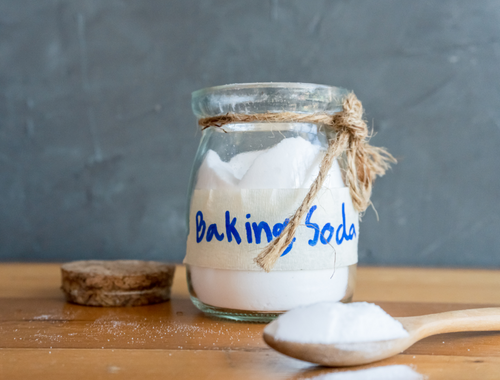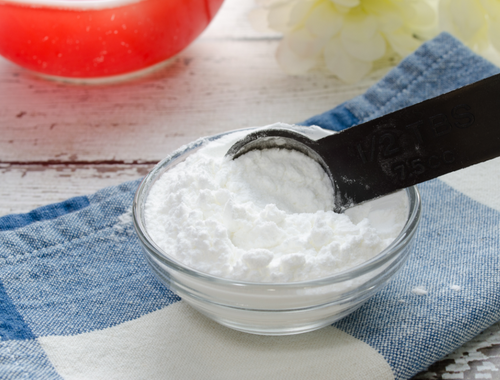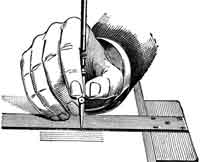Baking soda and baking powder are certainly familiar to you if you bake. But why do certain recipes require either one or both? What makes the two substances similar to each other?

What is Baking Soda?
Pure sodium bicarbonate, or baking soda, is a fine, white powder with numerous uses. Baking soda is alkaline. Acid is necessary for baking soda to function; otherwise, the mixture won’t rise. If you add too much, the residual bicarb in the mixture will give your baked goods a soapy, metallic flavor.
Baking soda is frequently included in recipes that call for acidic ingredients such as buttermilk or cocoa powder. Baking soda reacts with acid when added to a mixture, producing carbon dioxide. The batter expands and rises during baking in a hot oven, giving the final product a fluffy and light texture.
Baking soda also aids in the browning of baked goods. That implies that people frequently utilize it to create items like cookies. Sodium bicarbonate is also utilized as an ingredient in toothpaste, other personal care items, and cosmetics.
To temporarily ease acid reflux, some people mix baking soda and water. It neutralizes stomach acidity similarly to over-the-counter antacids since it has an alkaline PH.
Baking soda produces the bubbles immediately when it’s added to the recipe, and therefore, the batter or dough should be placed in the right away before all the bubbles disappear. Baking soda is therefore used in “quick” recipes for bread or biscuits. There is no requirement to wait for the dough to rise.

What is Baking Powder?
Baking powder is a dry chemical comprised of cornstarch, an acid (such as cream of tartar), and sodium bicarbonate (baking soda). Baking powder is used in recipes when the lift is required. If you’ve ever made a cake and neglected to add the baking powder, you know how crucial it is.
Three dry ingredients make up baking powder: an acid, like monocalcium phosphate; a base, like baking soda; and a filler, like cornstarch, which will act as a drying agent. This powder undergoes a chemical reaction when water is added, and just like yeast, the acid and base form carbon dioxide bubbles. These air bubbles aid in the rising and fluffy texture of baked foods like bread.
The proteins form a framework around the CO2. As a result, they rise and expand when the cake or biscuits bake in the oven. This process continues as the cake or cookies are baked.
Baking powder contains cornstarch (or another filler) to stop it from clumping, absorbing moisture from the air, and reacting in the box before transferring it to your mixing bowl.
Cornstarch is added to the mixture to prevent baking powder from clumping and absorbing moisture from the air, which would cause the acid and the baking soda to react in the can and produce CO2 before it reaches your mixing bowl.
Similarities Between Baking Soda and Baking Powder
Both are Leavening Agent
Any of the various ingredients used in batters and doughs that create a foaming action that lightens and softens the mixture is referred to as a leavening or raising agent in cooking. Mechanical action that incorporates air is a substitute for addition to leavening agents.
As leavening agents, baking soda and baking powder release gas to cause the batter or dough to rise.
Both Are Made from Sodium Bicarbonate
Acid powder and sodium bicarbonate are combined to make baking powder (like cream of tartar). It only requires moisture and heat to activate because it already contains an acid.
When baking soda is incorporated with an acid, it becomes active. Baking soda is thus made active in recipes by being combined with an acidic substance (such as lemon juice, buttermilk, or yogurt). However, be aware that baking soda can also be activated by heat.
You Can use both for Cleaning Purposes.
Baking soda is more efficient at cleaning than baking powder. However, for every component of baking soda used, you’ll need 4 times as much baking powder. Even then, the baking powder won’t be as effective in deodorizing and removing stains as baking soda.
FAQs
What is the difference between baking soda and baking powder?
Sodium bicarbonate, an alkaline salt molecule that releases C02 gas when combined with an acid, is the sole component of baking soda. On the contrary, baking powder is a combination of an acid similar to cream of tartar and sodium bicarbonate that needs both moisture and heat to activate.
Are baking soda and baking powder different or the same?
Despite appearing to be somewhat same, the two goods are not the same. Baking soda is also known as sodium bicarbonate, and for it to be activated and provide help to raise baked goods, it needs both an acid and a liquid. In contrast, baking powder also contains an acid and sodium bicarbonate.
What is similar to baking powder?
Baking powder is a typical ingredient that gives baked foods a lighter texture and more volume.
There are substitutes you can use if it’s not readily available, such as buttermilk, plain yogurt, molasses, cream of tartar, and sour milk.
What is similar to baking soda?
You can replace baking soda with potassium bicarbonate at a 1:1 ratio. Increase the salt in your recipe to compensate for the absence of sodium compared to ordinary baking soda to account for flavour differences.
What’s the difference between baking soda and baking powder for cleaning?
Baking soda can dissolve dirt and oil because it is a mild alkali, and oil easily in water for efficient removal, baking soda functions as a cleaning agent. In addition, baking soda is non-toxic, in contrast to many other household cleaners, because it is a pure, natural product that is also a food.
Still, the baking powder could be a better cleaning agent because it contains various ineffective cleaning chemicals. In reality, baking powder is a combination of cornflour, cream of tartar, and bicarbonate of soda.
Can you substitute baking soda and baking powder?
An alternative leavening agent to baking soda is baking powder, but it doesn’t have the same impact. For every two teaspoons of baking powder, use 1/3 cup of baking soda.
If you only have baking powder and a recipe calls for baking soda, you’ll need two or 3 times as much baking powder to achieve the same level of leavening power. The result might taste a touch bitter.
Which one is better? Baking soda or baking powder?
A rising agent called baking soda includes one or more acidic substances, like buttermilk or cocoa powder. Baking powder is preferable for recipes with no ingredients that include acids. Baking soda aids in the crispiness and lightness of fried foods. Additionally, it helps with cleaning and stain removal.
Do you need both baking powder and soda?
In some recipes, you need both baking and soda Baking powder and baking soda are frequently used in recipes since many require both reactions to attain the desired overall balance of flavour and texture. Although the ingredients contribute air to the baking process, they are additives rather than replacements.












Leave a Reply